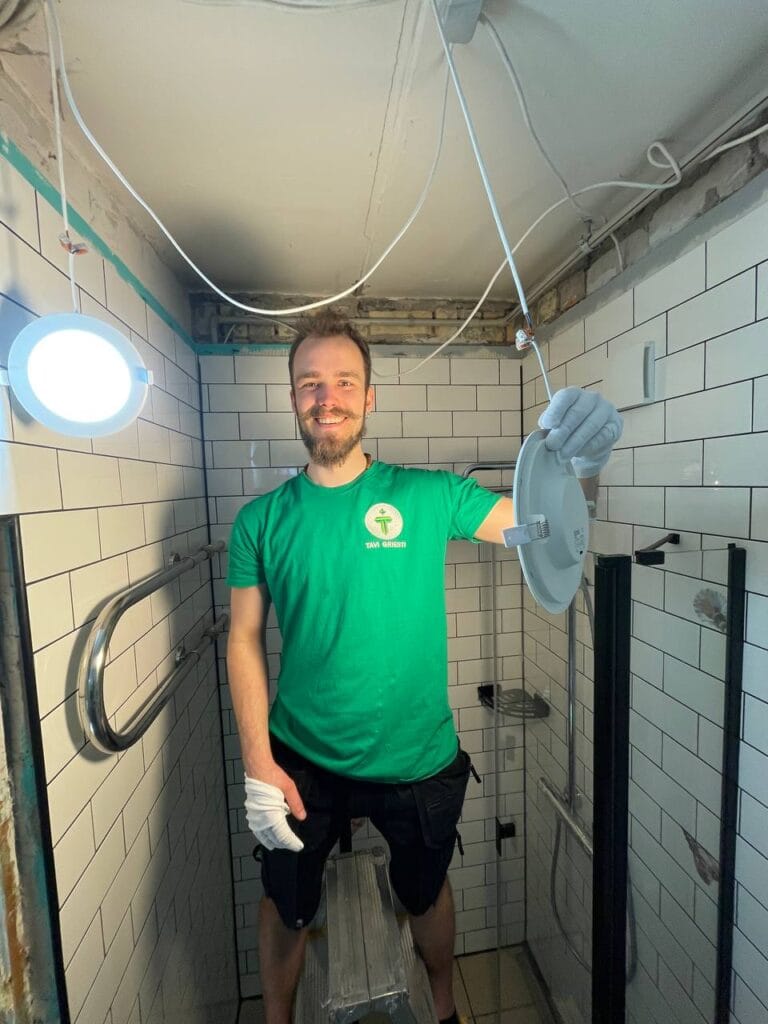F.A.Q
B.U.J.
Frequently Asked Questions

Where to start?
Would you like to know more about stretch or French ceilings? Our FAQ page is designed to answer the most frequently asked questions and help you make an informed decision. Here you will find detailed information on what stretch ceilings are, their benefits, as well as practical advice on the installation process and maintenance.
Check out our answers to learn everything you need to know about these modern ceiling solutions and discover how French ceilings can completely transform the look and functionality of your space!
Frequently Asked Questions
What is a stretch ceiling?
Stretch ceilings are an aluminum or plastic frame covered with PVC film of your choice.
What are stretch ceilings made of?
PVC film.
In which cities do you install stretch ceilings?
All over Lithuania and Latvia.
Which stretch ceilings can be used?
Stretch ceilings can be matte, glossy, satin, transparent, multi-level or photo.
What is the difference between matt and gloss stretch ceilings?
Both matt and gloss ceilings are made of PVC film, so they have the same properties. The only difference is the appearance: matt ceilings resemble a painted surface, whereas gloss ceilings resemble a lacquered surface.
Do I need to prepare the room before installing a stretch ceiling?
Yes. Make sure there are no sharp objects or parts on the ceiling, walls and floor that could damage the stretch ceiling. The floor (if already installed) and any objects should also be covered with a film, which should first be pulled closer to the centre of the room so that they do not obstruct access to the walls around their perimeter.
How long does installation take?
1-5 days, depending on the size of the room and the complexity of the project.
How are stretch ceilings made?
The PVC film is cut according to the room drawings and the customer's individual wishes, and the edges are coated with a special sealant after cutting.
What are the advantages of stretch ceilings?
The main advantages: they can be installed at the very end of the renovation, the installation is dust-free, the stretch ceiling does not crack or yellow, it comes with a 12-year guarantee, the stretch ceiling is protected in the event of fading and is easy to renew, the installation requires nothing from you, you can install any lamps, even magnetic tracks, you can fit a concealed curtain rod. The ceiling remains perfectly flat and smooth even after 10 years of operation.
Are there any disadvantages to stretch ceilings?
Like other finishes, stretch ceilings have their drawbacks: they cannot be installed in a permanent way, they cannot be cut with sharp objects, they cannot be repainted (but do not need to be), PVC ceilings cannot be used in unheated rooms.
What are the advantages of stretch ceilings compared to plasterboard ceilings?
Compared to plasterboard, stretch ceilings: do not require several specialists to install, spackle and paint, one team in one day; do not crack or yellow; do not absorb moisture - ideal for bathrooms and kitchens; can be installed after all renovation work has been completed.
